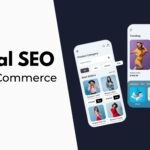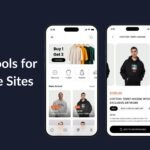- By Kiwi Commerce
- 04 May, 2025
- eCommerce Development, Marketing
The Beginner’s Guide to Web Accessibility: Why It Matters for Your Business
Inclusive design isn’t optional — it’s essential
In today’s digitally driven world, your website frequently serves as the initial—and sometimes sole—interaction between your brand and potential customers. But here’s the question: Is your website truly accessible to everyone?
For millions of users — including those with visual, auditory, cognitive, or motor disabilities — navigating an inaccessible website can be frustrating, or even impossible. And as a business, whether you’re in eCommerce or offer professional services, that’s not just a missed opportunity — it’s a barrier to growth.
At Kiwi Commerce, we help businesses create websites that are not only visually appealing and high-performing, but also inclusive. In this beginner’s guide, we’ll explain what web accessibility is, why it matters, and how to start making your site more accessible today.
What is Web Accessibility?
Web accessibility refers to creating and building websites, tools, and technologies in a way that ensures individuals with disabilities can access and use them without difficulty.
This includes ensuring that all users can:
- Perceive content (e.g. text, images, video)
- Understand the structure and flow of information
- Navigate the site easily and intuitively
- Interact with elements like forms, buttons, and menus
Accessibility also benefits:
- Older users with age-related impairments
- Mobile users with limited screen size or connectivity
- People in temporary situations (e.g. broken arm, noisy environment)
In short: accessible websites work better for everyone.
Is Web Accessibility a Legal Requirement
Under the Equality Act 2010, UK businesses must ensure that digital content is not discriminatory or exclusionary. This includes:
- Making “reasonable adjustments” to accommodate users with disabilities
- Ensuring websites and digital services are accessible to the widest possible audience
While there’s no specific “web accessibility law” in the UK, non-compliance can lead to legal action, reputational damage, and lost customers.
Public sector websites are already required to meet the WCAG 2.1 AA standard (Web Content Accessibility Guidelines) — and the private sector is quickly expected to follow.
Why Web Accessibility Matters for Your Business
Beyond legal compliance, accessibility is simply good business sense. Here’s why:
1. Reach a Bigger Audience
An estimated 1 in 5 people in the UK has a long-term illness, impairment, or disability. That’s millions of potential customers who may struggle to use a website that isn’t accessible.
2. Improve SEO
Google values accessible sites. Many accessibility best practices — like proper heading structure, alt text, and clear navigation — also support better SEO performance.
3. Enhance User Experience
Accessible sites tend to be more intuitive, faster, and easier to use for all users — improving your bounce rate, session duration, and conversions.
4. Build Brand Trust & Reputation
Showing that your business cares about inclusivity enhances your brand image and builds trust — particularly among younger, socially conscious audiences.
5. Future-Proof Your Digital Presence
Accessibility is becoming the standard, not the exception. Future-proofing your site now helps you stay ahead of regulations and competitor expectations.
Who Benefits from an Accessible Website?
It’s not just users with permanent disabilities. Accessibility also benefits:
| Group | Benefit |
| People with low vision | Screen reader support, high contrast modes |
| People with dyslexia | Clear typography, simplified layouts |
| Motor impairments | Keyboard-friendly navigation, larger buttons |
| Colour blindness | No reliance on colour alone to convey info |
| Ageing users | Larger text, voice search, simplified flows |
| Mobile users | Responsive design, adaptable layouts |
By building accessibility into your site, you’re designing for real people in real-life situations.
Accessibility Best Practices: Getting Started
Here’s how to begin improving accessibility on your website:
1. Use Semantic HTML Structure
A properly structured site makes it easier for screen readers and assistive technologies to interpret content.
- Use <h1> for main headings, <h2> for subheadings, and so on
- Label navigation menus, forms, and buttons clearly
- Avoid skipping heading levels (e.g. jumping from H2 to H4)
2. Add Descriptive Alt Text to Images
Images should include alt attributes that describe their purpose or content.
✅ Alt: “Woman using a laptop in a coffee shop”
❌ Alt: “Image123.jpg”
This helps visually impaired users and improves SEO.
3. Ensure Keyboard Navigation
Many users can’t use a mouse. Your site must be fully usable via keyboard:
- Tab through links and form fields
- Highlight active elements
- Allow users to navigate menus and pop-ups
4. Use High Contrast & Readable Fonts
Ensure there is enough contrast between text and background colours. Avoid:
- Light grey text on white
- Tiny font sizes (stick to 16px+)
- Overly decorative or narrow fonts
Tools like WebAIM Contrast Checker can help you test your palette.
5. Provide Transcripts & Captions
If your site features video or audio:
- Add closed captions
- Provide transcripts for podcasts or interviews
- Use descriptive video titles and summaries
This makes content accessible to users with hearing impairments — and also boosts content visibility.
6. Avoid Flashing or Auto-Playing Content
Flashing animations or videos can trigger seizures in some users. Always:
- Avoid rapid blinking/flashing
- Allow users to pause, stop or mute auto-playing media
- Provide controls for motion effects
7. Test Your Site with Real Users
Automated tools are helpful, but real feedback from users with accessibility needs is vital. Conduct usability testing with people who use screen readers, voice control, or keyboard navigation.
Recommended Accessibility Tools
- WAVE by WebAIM – Accessibility evaluation tool
- axe DevTools – Browser extension for finding accessibility issues
- NVDA / VoiceOver – Screen reader testing tools
- Lighthouse (Chrome DevTools) – Overall site performance and accessibility testing
Kiwi Commerce: Making Accessibility Simple for Businesses
We help UK businesses make their websites inclusive, compliant, and high-performing — whether you run an online store, provide services, or operate a public-facing platform.
With UX-first design, accessible coding practices, and ongoing audits, Kiwi Commerce ensures your site meets both legal standards and real user needs.
Final Thoughts
Accessibility isn’t just about compliance — it’s about inclusion, usability, and good digital citizenship. A more accessible site means a better experience for everyone — and better outcomes for your business.
🚀 Ready to create an accessible, inclusive website?
Let Kiwi Commerce help you assess, optimise, or redesign your site with accessibility in mind.
👉 Get in touch with our team — we’re here to help you build digital experiences that work for everyone.



